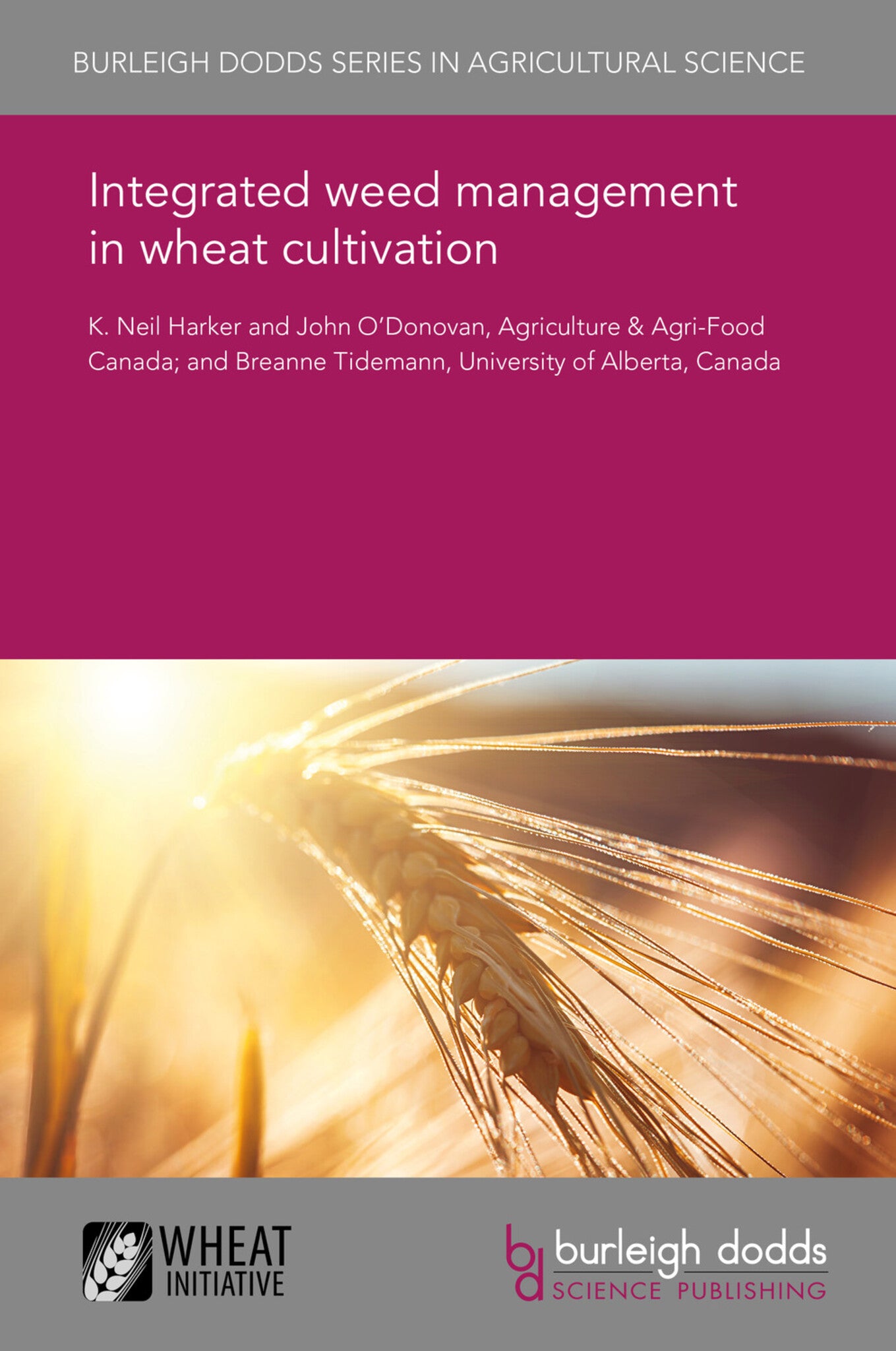We're sorry. An error has occurred
Please cancel or retry.
Integrated weed management in wheat cultivation

Some error occured while loading the Quick View. Please close the Quick View and try reloading the page.
Couldn't load pickup availability
- Format:
-
31 July 2016

Weed management in wheat cultivation is dominated by one control method – use of herbicides. Their overuse has led to weed resistance to herbicides and the need for alternative weed control strategies that will preserve herbicide efficacy as well as agricultural and environmental sustainability. The focus of this chapter is on cultural strategies that can be used in wheat cultivation as part of an integrated weed management (IWM) strategy. Practices that improve wheat plant health
including diverse crop rotations, the proper placement and timing of balanced nutrients, and no-till or direct-seeding are encouraged. Practices that promote wheat canopy closure such as growing competitive cultivars, increasing wheat density, decreasing wheat row spacing, planting wheat in uniform patterns and intercropping are also shown to facilitate IWM.

TECHNOLOGY & ENGINEERING / Agriculture / General, Agricultural science, TECHNOLOGY & ENGINEERING / Agriculture / Agronomy / Crop Science, TECHNOLOGY & ENGINEERING / Agriculture / Agronomy / Soil Science, TECHNOLOGY & ENGINEERING / Agriculture / Sustainable Agriculture, TECHNOLOGY & ENGINEERING / Pest Control, Botany and plant sciences, Sustainable agriculture, Organic farming, Agronomy and crop production, Pest control / plant diseases

1 Introduction – current weed control practices in wheat cultivation 2 Weed ecology and vulnerability 3 Integrated weed management (IWM) 4 IWM components 5 Combining optimal IWM components 6 Summary 7 Future trends 8 Where to look for further information 9 References



